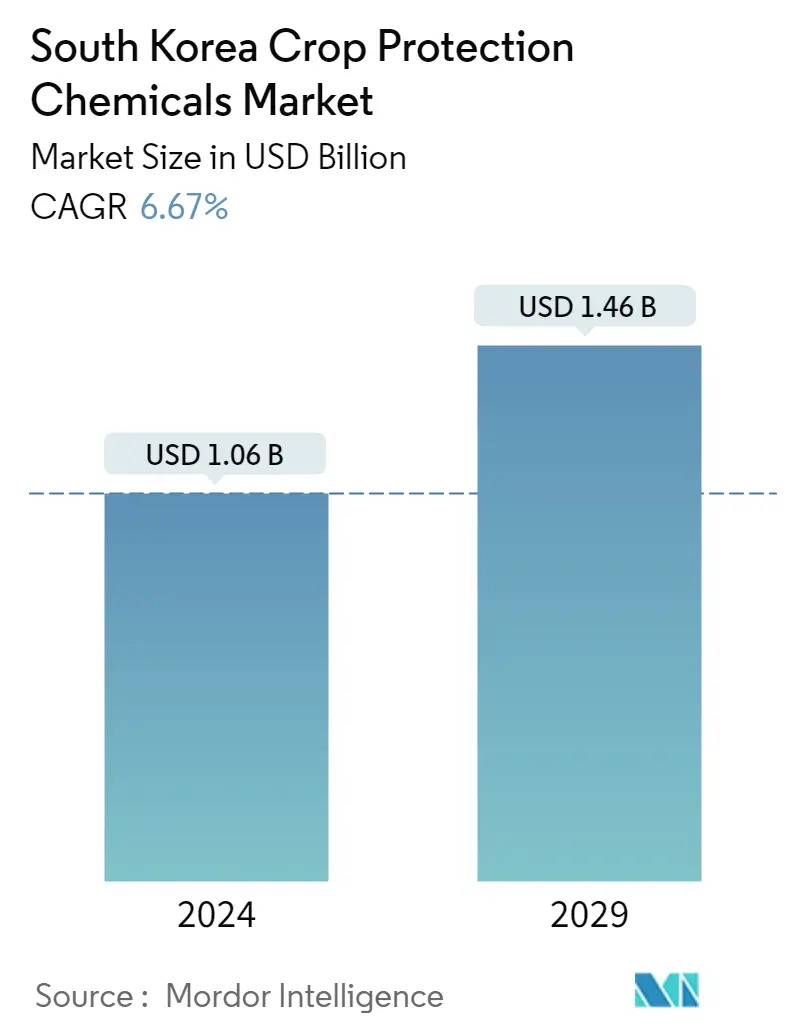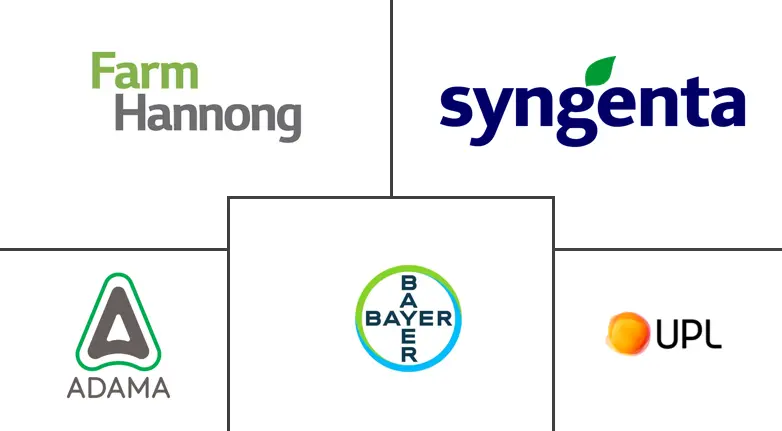Market Size of South Korea Crop Protection Chemicals Industry

| Study Period | 2019 - 2029 |
| Base Year For Estimation | 2023 |
| Market Size (2024) | USD 1.06 Billion |
| Market Size (2029) | USD 1.46 Billion |
| CAGR (2024 - 2029) | 6.67 % |
| Market Concentration | High |
Major Players
*Disclaimer: Major Players sorted in no particular order |
Need a report that reflects how COVID-19 has impacted this market and its growth?
South Korea Crop Protection Chemicals Market Analysis
The South Korea Crop Protection Chemicals Market size is estimated at USD 1.06 billion in 2024, and is expected to reach USD 1.46 billion by 2029, growing at a CAGR of 6.67% during the forecast period (2024-2029).
- In South Korea, rice is the most cultivated grain, which accounts for about 90% of the total grain production and over 40% of farm income. In addition, other crops include vegetables, soybean, other oilseeds, and fruits and vegetables that consume the bulk of crop protection chemicals. South Korea is a mountainous country, with less than 22% of the land area available as arable land. Hence, Korean farmers emphasize maximizing productivity per unit of land, and efficient crop protection solutions play an essential role in achieving efficient productivity.
- Major players are innovating with new products based on safety and regulatory issue in the market and eco-friendly products. For instance, Adama expanded its proprietary nematicide, Nimitz, to Japan, the world's fourth-largest agricultural market, and also to South Korea and Taiwan. Adama has secured regulatory approval for the product in these markets for various crops, among them sweet potatoes, fruiting vegetables, melons, and others, in addition to the existing product registrations in several other markets, such as the US, Mexico, Australia, and Israel. It offers a highly effective and simple-to-use solution to farmers for the control of nematodes, along with a low toxicity and eco-toxicity profile compared to other alternatives currently on the market.
- Korean agricultural authorities introduced the Positive List System (PLS), accelerating the rapid growth of biological and eco-friendly products in Korea. This new regulation, which aims to promote pesticide residue safety, stipulates that farmers should strictly follow product labels and guides in terms of application on crops, application frequencies, application rate, and other important safety precautions. As a result, in many sectors, farmers couldn't use chemical pesticides that were used conventionally for a long time without a label list. In addition, these chemical pesticides were replaced by bio-pesticides. This will boost the market to grow in the coming years.
